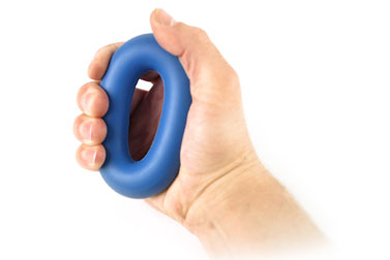| Preparation and training. | |
|
Most of us probably prefer pure technical solutions to our physical problems, so that we don't have to involve ourselves in a personal way. Concerning winter windsurfing, there are no shortcuts - unfortunately there's no doubt that the most important way to prepare is to practice TRAINING.
If you're fit for fight, you have ...
All forms of training that strengthen muscles, heart and lunge are good. Not intending to devaluate other ways of training, I'm confident that road biking and (especially) mountain biking can be transferred to windsurfing with very good effects. But please remember - we're not talking about a kind of "alibi biking" now and then. You'll have to work hard - no pain, no gain!
At least when it comes to the major problem - the cold fingers - training is the most important single element in winter windsurfing. No matter how fine gloves or mittens you have - limp hands and flabby fingers always result in loosing your grip of the boom. Consequently you'll try to squeeze the boom harder, resulting in pressing blood away from your fingers, allowing the cold a freer scope ... etc. Further, strong hands and fingers allow you more possibilities. You may play "Captain Hook" with your hands, in this way avoiding the blood to be squeezed away - or you may use your power to "pulsate" fresh blood to your finger tips.
How do you train your hands and fingers then? Well, I don't know what you can gain in the fitness centers - but I'm very convinced that the best training (as ever) is time on the water. Of course, it's not always the most comfortable kind of exercise to sail until your fingers gets numb and your forearms cramps. But if you pull yourself together and sail to the limit of your capability a couple of times a week the problems with limp and cold fingers shall probably be history very soon. If for a period you pause from sailing, of course you'll have to start regain the strength again. But again - out on the water and sailing to the limit (and perhaps a little over) of your hands and fingers, and you'll never experience "dead fingers" again!
Even if it's not that efficient it might be a good idea to do a little extra exercise of your fingers on a daily basis. One way is to accustom your fingers to take hold of something with almost the same size and shape as a boom - and in this respect you're only limited by your imagination: How about placing some short pieces of old boom tubes on the handlebars of your mountain bike - or how about taping some ribbon on the steering wheel of your car, just to create an illusion of a boom? Well, the last suggestion perhaps isn't exactly safe for traffic reasons - but you got the idea ...
Another way to give your fingers tolerance for working with the boom is by practicing strengthening exercises. Among rock climbers it is (or at least it was earlier) pretty common to bring with you a "Forearm Trainer" (kind of ring from rubber) wherever you are. Some years ago I had a forearm trainer placed around the gearlever of my old car, and as soon as one hand was free from duties (away from urban traffics) the rubber ring was exercised heavily. There's a kind of secondary (mental) gain from exercising a rubber ring with this purpose: I'm pretty sure that when driving your car with one hand, and exercising your forearm trainer with the other hand, you can't avoid dreaming yourself out on the sea, doing speed sailing or doing hot tricks - and perhaps with flashbacks from the time, when you had to stay ashore in the wintertime because of weak hands ... |
|
|
|
This one is made by Black Diamond: http://www.blackdiamondequipment.com/ |
